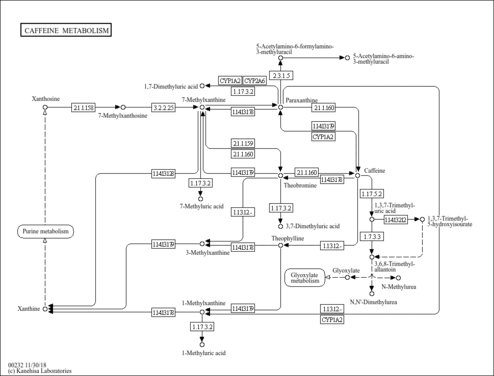| MS/MS | LC-MS/MS Spectrum - Quattro_QQQ 10V, Positive (Annotated) | splash10-001i-0900000000-8d639c53ad9b2b8f508e | 2012-07-25 | View Spectrum |
| MS/MS | LC-MS/MS Spectrum - Quattro_QQQ 25V, Positive (Annotated) | splash10-014i-9300000000-0d20b5fe9b93b113a29e | 2012-07-25 | View Spectrum |
| MS/MS | LC-MS/MS Spectrum - Quattro_QQQ 40V, Positive (Annotated) | splash10-014l-9000000000-55968ca3e94ce5a05cfe | 2012-07-25 | View Spectrum |
| MS/MS | LC-MS/MS Spectrum - EI-B (Unknown) , Positive | splash10-001i-6900000000-7d44855bbf11e559d96e | 2012-08-31 | View Spectrum |
| MS/MS | LC-MS/MS Spectrum - LC-ESI-QQ (API3000, Applied Biosystems) 10V, Positive | splash10-001i-1900000000-1932568f11357ae32f55 | 2012-08-31 | View Spectrum |
| MS/MS | LC-MS/MS Spectrum - LC-ESI-QQ (API3000, Applied Biosystems) 20V, Positive | splash10-001i-2900000000-3918185c5a4afb18f11a | 2012-08-31 | View Spectrum |
| MS/MS | LC-MS/MS Spectrum - LC-ESI-QQ (API3000, Applied Biosystems) 30V, Positive | splash10-0910-5900000000-b590772083f824ea0fc6 | 2012-08-31 | View Spectrum |
| MS/MS | LC-MS/MS Spectrum - LC-ESI-QQ (API3000, Applied Biosystems) 40V, Positive | splash10-014i-9400000000-c06ac99fd6e0c84d9653 | 2012-08-31 | View Spectrum |
| MS/MS | LC-MS/MS Spectrum - LC-ESI-QQ (API3000, Applied Biosystems) 50V, Positive | splash10-014i-9100000000-3802e577174b5a4acced | 2012-08-31 | View Spectrum |
| MS/MS | LC-MS/MS Spectrum - DI-ESI-qTof , Positive | splash10-02a9-2900000400-2ae0058f4f5f9fc23c01 | 2017-09-14 | View Spectrum |
| MS/MS | LC-MS/MS Spectrum - , negative | splash10-004j-7900000000-54365e34320abc3c8f2e | 2017-09-14 | View Spectrum |
| MS/MS | LC-MS/MS Spectrum - LC-ESI-QQ , positive | splash10-001i-1900000000-599d34de0bc963388dc0 | 2017-09-14 | View Spectrum |
| MS/MS | LC-MS/MS Spectrum - LC-ESI-QQ , positive | splash10-001i-2900000000-8a0fd0cd87c35684d19f | 2017-09-14 | View Spectrum |
| MS/MS | LC-MS/MS Spectrum - LC-ESI-QQ , positive | splash10-0910-5900000000-b590772083f824ea0fc6 | 2017-09-14 | View Spectrum |
| MS/MS | LC-MS/MS Spectrum - LC-ESI-QQ , positive | splash10-014i-9400000000-c06ac99fd6e0c84d9653 | 2017-09-14 | View Spectrum |
| MS/MS | LC-MS/MS Spectrum - LC-ESI-QQ , positive | splash10-014i-9100000000-3802e577174b5a4acced | 2017-09-14 | View Spectrum |
| MS/MS | LC-MS/MS Spectrum - LC-ESI-QTOF , positive | splash10-001i-0900000000-b1202b5f491f2aaaf542 | 2017-09-14 | View Spectrum |
| MS/MS | LC-MS/MS Spectrum - LC-ESI-QTOF , positive | splash10-01qi-0900000000-d58a783853c528b7d126 | 2017-09-14 | View Spectrum |
| MS/MS | LC-MS/MS Spectrum - LC-ESI-QTOF , positive | splash10-01b9-8900000000-d9e4a4411ab0ed3620a0 | 2017-09-14 | View Spectrum |
| Predicted MS/MS | Predicted LC-MS/MS Spectrum - 10V, Positive | splash10-001i-0900000000-3f82b9da0450b7ae12ae | 2017-06-28 | View Spectrum |
| Predicted MS/MS | Predicted LC-MS/MS Spectrum - 20V, Positive | splash10-001i-0900000000-235bf01d7d7435b9fe54 | 2017-06-28 | View Spectrum |
| Predicted MS/MS | Predicted LC-MS/MS Spectrum - 40V, Positive | splash10-0kai-9200000000-cb89e2e8ee405aba807d | 2017-06-28 | View Spectrum |
| Predicted MS/MS | Predicted LC-MS/MS Spectrum - 10V, Negative | splash10-004i-0900000000-fa072bef954a047da7f7 | 2017-06-28 | View Spectrum |
| Predicted MS/MS | Predicted LC-MS/MS Spectrum - 20V, Negative | splash10-004r-0900000000-22f6a3f6049c3a993878 | 2017-06-28 | View Spectrum |
| Predicted MS/MS | Predicted LC-MS/MS Spectrum - 40V, Negative | splash10-052f-9300000000-afa55dfa675c3caec4f0 | 2017-06-28 | View Spectrum |
